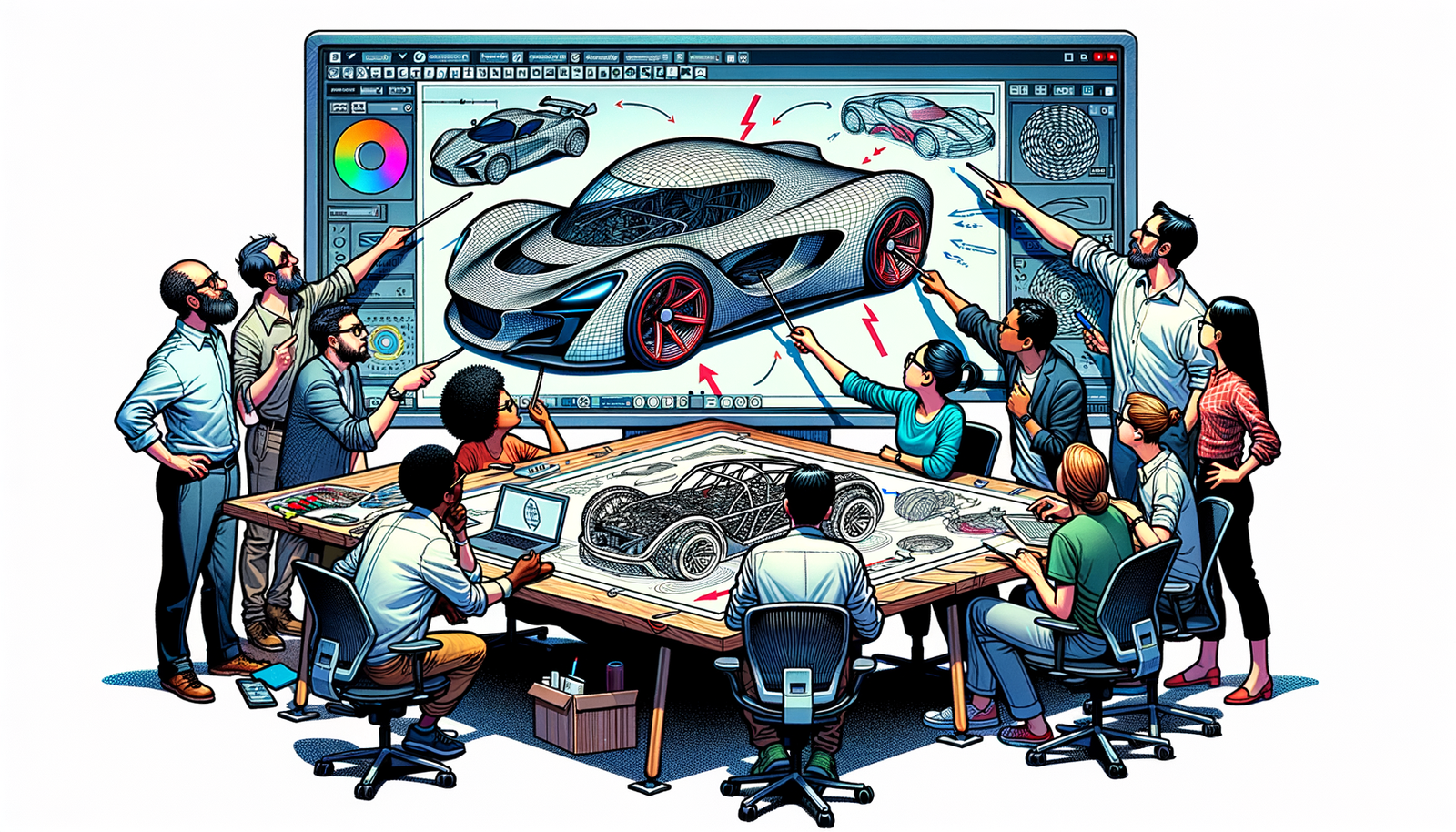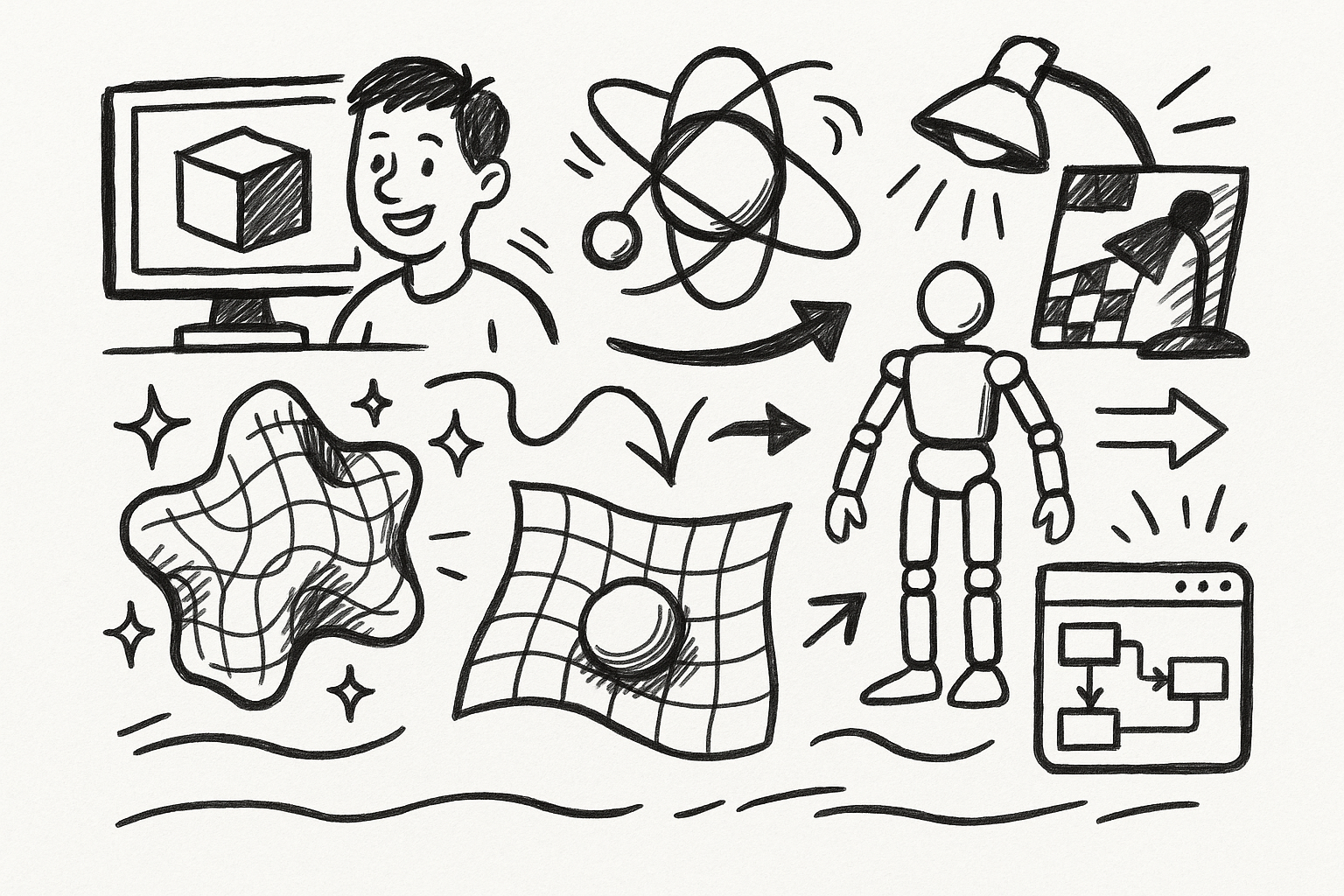Your Cart is Empty
Customer Testimonials
-
"Great customer service. The folks at Novedge were super helpful in navigating a somewhat complicated order including software upgrades and serial numbers in various stages of inactivity. They were friendly and helpful throughout the process.."
Ruben Ruckmark
"Quick & very helpful. We have been using Novedge for years and are very happy with their quick service when we need to make a purchase and excellent support resolving any issues."
Will Woodson
"Scott is the best. He reminds me about subscriptions dates, guides me in the correct direction for updates. He always responds promptly to me. He is literally the reason I continue to work with Novedge and will do so in the future."
Edward Mchugh
"Calvin Lok is “the man”. After my purchase of Sketchup 2021, he called me and provided step-by-step instructions to ease me through difficulties I was having with the setup of my new software."
Mike Borzage
Revolutionizing Product Development with Advanced Simulation Techniques in Design Software
October 24, 2024 5 min read


In the rapidly evolving landscape of engineering and design, the role of simulation has become increasingly critical. Advanced simulation techniques are not just tools but essential components that enable engineers and designers to predict, analyze, and optimize complex systems before they are physically realized. This integration of simulation into the engineering computation process has revolutionized the way products are conceptualized and brought to market, addressing modern challenges with greater efficiency and innovation.
Introduction to Advanced Simulation Techniques
Advanced simulation techniques refer to sophisticated computational methods used to model and analyze complex physical systems. These techniques are paramount in engineering computation as they provide a virtual environment to test theories, validate designs, and predict performance without the need for physical prototypes. The importance of these techniques lies in their ability to save time and resources while enhancing the accuracy of predictions in engineering projects.
The evolution of simulation methods in design software has been monumental. From basic linear analyses to non-linear, dynamic simulations, the capabilities of modern software have expanded significantly. Early simulation tools were limited in scope and computational power, often providing approximate solutions to simplified models. Today, with the advent of high-performance computing and advanced algorithms, simulations can handle intricate models with multiple interacting physical phenomena.
In the context of modern engineering challenges, simulation plays a critical role. Engineers are faced with the demand for more complex, efficient, and sustainable designs. Advanced simulation techniques enable the exploration of innovative solutions while mitigating risks associated with physical testing. **By accurately predicting system behavior under various conditions, simulations help address challenges such as material limitations, environmental impacts, and performance optimization**.
Types of Advanced Simulation Techniques
Finite Element Analysis (FEA)
Finite Element Analysis (FEA) is a numerical method used to predict how a product reacts to real-world forces, vibration, heat, and other physical effects. By breaking down a complex structure into smaller, manageable finite elements, FEA allows engineers to model and analyze the structural integrity of designs. **FEA is widely applied in structural analysis to determine stress distribution, deformation, and potential failure points in materials and components**.
The benefits of using FEA for stress testing and performance optimization are significant. It enables engineers to identify weak spots in a design before manufacturing, leading to cost savings and improved safety. **FEA facilitates the optimization of material usage and structural design, ensuring that products meet required strength criteria while minimizing weight and material costs**. This method is essential in industries where structural reliability is paramount, such as aerospace, automotive, and civil engineering.
Computational Fluid Dynamics (CFD)
Computational Fluid Dynamics (CFD) is the study of fluid flow and heat transfer using numerical analysis and algorithms. CFD allows engineers to simulate fluid (gas and liquid) interactions with surfaces and boundaries, providing insight into flow patterns, pressure distributions, and thermal effects. **By solving complex equations that govern fluid behavior, CFD helps in predicting how fluids will move and interact with various designs**.
In product design and performance enhancement, CFD is invaluable. **Use cases of CFD include optimizing aerodynamic profiles in automotive and aerospace industries, improving HVAC system efficiency in buildings, and enhancing mixing processes in chemical engineering**. CFD simulations help in refining designs to achieve desired flow characteristics, reducing drag, improving cooling, and increasing overall system efficiency.
Multi-physics Simulations
Multi-physics simulations involve the simultaneous simulation of multiple physical phenomena within a single model. This approach is significant in complex systems where interactions between different physical processes affect overall performance. **Multi-physics simulations can encompass combinations of structural, thermal, fluid, electrical, and chemical analyses, providing a comprehensive understanding of system behavior**.
Examples of applications are abundant in advanced engineering fields. **In aerospace engineering, multi-physics simulations are used to analyze the aeroelastic effects on aircraft wings, considering the interaction between aerodynamic forces and structural deformations**. In automotive engineering, they help in modeling the thermal management systems of electric vehicles, integrating thermal and electrical simulations. In civil engineering, multi-physics simulations assess the impact of seismic activity on infrastructure by combining structural and geotechnical analyses.
Integration of Simulation in Design Workflows
The integration of simulation into design workflows marks a significant shift from traditional design processes. Traditionally, design and analysis were sequential; a design was created, then analyzed, and iterated upon based on the analysis results. **Now, simulation is integrated early and continuously throughout the design process, enabling immediate feedback and iterative improvements in real-time**.
This integration enhances collaboration between design and engineering teams, promoting a more holistic approach to product development. **Simulation tools embedded within design software allow for rapid prototyping and optimization, reducing the time to market and increasing product quality**. Designers can explore a wider range of concepts with immediate insights into performance implications.
Several tools and software facilitate this seamless integration. **Software platforms like ANSYS, COMSOL Multiphysics, and Autodesk Simulation provide comprehensive environments where design and simulation coexist**. These tools support various simulation types and are often interoperable with CAD software, enhancing workflow efficiency. **Key features include parametric modeling, automatic mesh generation, and advanced visualization capabilities**.
Future Directions and Challenges in Simulation
Emerging technologies are set to revolutionize simulation optimization. **Artificial Intelligence (AI) and Machine Learning (ML) are being integrated to enhance simulation processes, enabling predictive modeling and automated optimization**. AI algorithms can analyze vast datasets from simulations to identify patterns and propose design improvements. **This leads to more efficient simulations and can significantly reduce computational time**.
Despite these advancements, challenges persist in adopting advanced simulation techniques. **Industries may face hurdles such as high initial investment costs for software and hardware, a steep learning curve for complex simulation tools, and resistance to changing established workflows**. Additionally, ensuring the accuracy of simulations requires high-quality data and precise modeling, which can be difficult to obtain for complex systems.
Predictions for the future of simulation point towards increased accessibility and integration. **Cloud computing and SaaS (Software as a Service) models are making high-performance simulation tools more accessible to smaller firms**. **There's also a trend towards greater integration of simulation with Internet of Things (IoT) data, allowing for real-time simulation and analysis of operational systems**. These advancements have the potential to dramatically impact engineering design by enabling more innovative and efficient solutions.
Conclusion
Advanced simulation techniques have become indispensable in the field of engineering computation. **They offer a profound understanding of complex systems, enabling engineers to predict and optimize performance before physical prototypes are made**. The transformative potential of integrating simulation into design processes is evident in the efficiency gains, cost savings, and innovation it brings to product development.
As engineering challenges grow more complex, the need for sophisticated simulation methods becomes more pressing. **Engineers and designers are encouraged to leverage these techniques to push the boundaries of innovation and efficiency in their projects**. By embracing advanced simulation tools, professionals can drive the development of cutting-edge solutions that meet the demands of the modern world.
Also in Design News

Revolutionizing 3D Design: Exploring Five Groundbreaking Innovations in Cinema 4D
August 31, 2025 4 min read
Read More
Revolutionizing Telecommunications: The Rise of Advanced Design Software
August 31, 2025 16 min read
Read More
Cinema 4D Tip: Optimizing 2D Matte Integration with Projection Man in Cinema 4D
August 31, 2025 3 min read
Read MoreSubscribe
Sign up to get the latest on sales, new releases and more …


